Ambitious Russia Trails U.S. in Arms Sales
Russia’s weapons merchants are back in the international limelight and the industry is booming.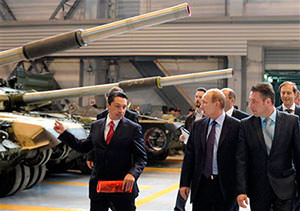
Russian arms sellers spared no effort last month at the International Defense Exhibition in Abu Dhabi. More than 30 companies presented the latest missiles, guns, tanks and aircraft to customers and delegations from 15 countries. Particular favorites among the audience were Russian anti-aircraft missile systems, attack helicopters and fighter jets, reported the government newspaper Rossiyskaya Gazeta. Even though Russian producers did not report any large-scale sales, they did seal contracts for an undisclosed number of fighter jets with China and for $116 million worth of ammunition to the host nation, the United Arab Emirates.
Rosoboronexport, the corporation that controls the export business of Russia’s defense industry, spends $40 million annually on the country’s presence at international arms fairs. It also organizes Russia’s own flagship exhibition every September in the town of Nizhny Tagil in the Urals. The event’s unique selling point to international buyers, according to Rossiyskaya Gazeta, is a “grandiose testing area that allows for the firing of all kinds of weapons for ground forces.”
Russia’s weapons merchants are back in the international limelight and the industry is booming. Between 2006 and 2012, arms exports more than doubled — to almost $14 billion last year. This is not enough to overtake the true behemoth in the international arms trade, the United States, but it is sufficient for second place. Exact numbers are hard to ascertain because important players such as China, Britain and Israel do not publish export statistics. The Centre for Analysis of World Arms Trade in Moscow estimates the total cash value of international weapons exports at almost $69 billion in 2012, a significant increase from $46 billion in 2009.
The international arms trade makes up only a small part of total global military expenditures, which the Stockholm International Peace Research Institute puts at $1.74 trillion for 2011. Considering the size of U.S. military expenditures — more than $700 billion in 2011 and somewhere between $500 billion and $600 billion in 2013, the dominance of U.S. defense companies is not surprising. Lockheed Martin, Boeing, Raytheon and Northrop Grumman each sold arms worth $21 billion to $36 billion in 2011 alone, most of them domestically.
The Russian defense industry is dealing with a different situation. After the collapse of the Soviet Union, new arms procurements by the Russian military fell drastically. Instead, Russian arms sellers looked for markets abroad. “For post-Soviet Russia, the arms trade became a major source of revenue for the defense industry, which for two decades virtually stopped producing for the domestic market,” writes Dmitri Trenin, director of the Carnegie Moscow Center.
Only under Vladimir Putin has this domestic market recovered. The defense budget, estimated at about $42 billion for 2010, has been steadily increased. In 2007, the Russian government announced that it would invest $750 billion until 2020 to buy new weapons. Within the government, the army’s domestic weapons spending spree created considerable tensions. Finance Minister Alexei Kudrin resigned in fall 2011 because he was unwilling to shoulder the budgetary strain of this decision. Other critics consider this money better spent on Russia’s crumbling public infrastructure and on housing.
For Putin, however, the benefits of this massive promotion of the domestic defense industry are clear. It would not only create jobs in Russia but also modernize the material basis of the Russian economy and aid scientific progress, he stated in December. The large Russian arms manufacturers are indeed important employers: Moscow-based United Aircraft Corporation has almost 100,000 workers, as does Almaz-Antey, the producer of Russia’s best-selling anti-aircraft systems. Moreover, the defense industry is one of the very few sectors in which Russia remains somewhat competitive internationally.
Putin has increasingly allied himself with military and security services representatives within the elite. He further consolidated state control of the defense industry. Ninety percent of the largest producers are state owned. The creation of Rosoboronexport also enabled the government to control the profitable export business. Since 2007, Russian defense companies have had to channel their exports through Rosoboronexport, which currently controls 80 percent of this market, according to the Center for Analysis of Strategies and Technologies.
In the export market, Russian companies have traditionally relied on Soviet-era contacts with former ideological allies. However, the Soviet Union’s ideologically motivated arms export strategy also cost it dearly. After the union’s collapse in 1991, many former client states could not pay back the generous loans through which weapons procurements had been financed. Paying customers such as Iraq and Syria have, at various times in the last 20 years, undergone civil wars and regime changes and no longer present reliable buyers. India remains one of the few traditional markets for Russian arms. In spite of delivery and quality problems, the two countries signed another deal for $2.9 billion in December. Currently, the portfolio of weapons contracts between them amounts to $7 billion.
Because of geopolitical changes and increased competition, Russian arms merchants have diversified their export markets and are currently delivering weapons to 60 nations, with almost half going to Asia and a quarter to Africa. The international arms trade is a murky and morally questionable business, and Russia traffics with some particularly dubious clients. Moscow has attracted global criticism because of its arms deliveries to Iran and Syria. Russia is considered to be the center of the international gray market of weapons, estimated at about $5 billion annually. In circumvention of an existing embargo, Russian helicopters were, for example, sold to Sudan in 2005, by way of Belarus. The German magazine Der Spiegel reports that retired Russian intelligence officers make a lot of money setting up these deals.
One particularly notorious case was Viktor Bout, on whose story the movie “Lord of War” was based, starring Nicolas Cage. Bout was a Soviet adviser in Africa and built a lucrative arms trade network based on his contacts. He sold weapons to war-torn countries such as Liberia and Angola in the 1990s, at times circumventing U.N. sanctions. At the same time, he also supplied U.N. and American troops in Iraq. In 2008, he was arrested in Thailand and extradited to the United States, where he was convicted and sentenced to 25 years in prison on terrorism charges. He had tried to sell heavy weapons, to be used against U.S. troops, to a CIA agent posing as a representative of a Colombian rebel group. The conviction aroused much debate, particularly in Russia, where many commentators pointed out the hypocrisy of the verdict and the double standard applied in comparison with Western nations whose arms dealings are also not beyond controversy.
In the Middle East, traditionally an important market for Russian arms, sellers find themselves increasingly under pressure from American and European competitors. The new Iraqi army is using almost exclusively American equipment. In October, the Iraqi government nonetheless signed a $4 billion deal with Russian arms manufacturers to buy helicopters and missiles. Citing “corruption,” Prime Minister Nouri al-Maliki subsequently canceled the deal. Russian arms expert Igor Korotchenko dismissed this accusation as a “smokescreen.” “I believe this is just a pretext and the true reason is Washington applying pressure on Baghdad,” he argued. Naturally, these accusations are difficult to prove, but it is clear that many in Iraq desire more independence from the U.S. in military affairs. In February, Iraqi Foreign Minister Hoshyar Zebari contradicted Maliki and said that the arms deal would go through regardless of earlier problems. Moral dilemmas do not appear to preoccupy anyone selling weapons in the Middle East, a highly unstable and therefore very profitable region for arms merchants.
It is highly unlikely that the international arms trade will be regulated more closely in the foreseeable future. In 2012, the U.N. organized a global conference to negotiate an arms trade treaty, and deliberations will be concluded by the end of March. However, demands by European nations and human rights organizations for clear regulation that would outlaw the sale of weapons to countries engaged in human rights violations stand little chance. Russian experts in particular claim that their country’s existing arms control system through Rosoboronexport is more than sufficient. Sergey Denisentsev, an expert at the Center for Analysis of Strategies and Technologies, claims that “Russia has one of the most well-developed arms control systems in the world.” Recent cases including clandestine weapons shipments to Syria would lead one to believe otherwise.
Russia is, however, not alone in rejecting tighter international controls. It is joined by the United States and China as well as smaller nations without a defense industry that fear restrictions on buying arms. “Governments are letting the unrelenting commercial pressures of arms companies and their own narrow national interests take precedence over building the rule of law and respect for human rights,” concludes Brian Wood, Amnesty International’s head of arms control and human rights.
Your support matters…Independent journalism is under threat and overshadowed by heavily funded mainstream media.
You can help level the playing field. Become a member.
Your tax-deductible contribution keeps us digging beneath the headlines to give you thought-provoking, investigative reporting and analysis that unearths what's really happening- without compromise.
Give today to support our courageous, independent journalists.
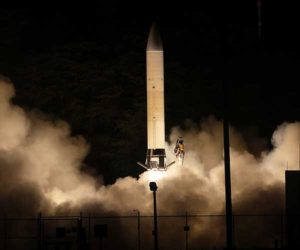
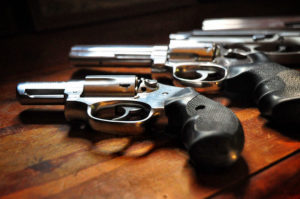
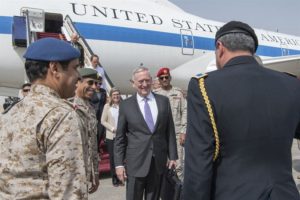
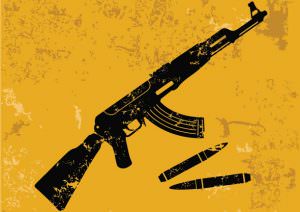
You need to be a supporter to comment.
There are currently no responses to this article.
Be the first to respond.